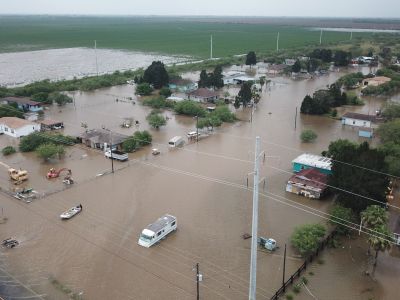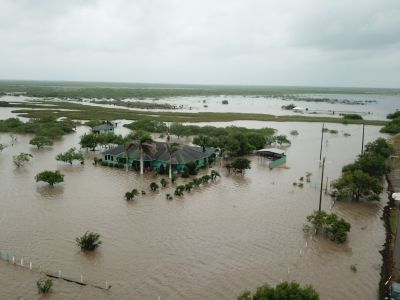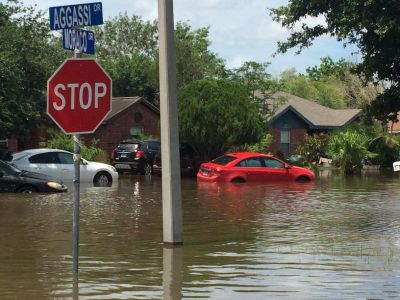Flooding in the RGV
Flooding is one of the most common disasters in the Rio Grande Valley. Because our region is flat and close to the Gulf of Mexico, heavy rains, especially during hurricane season, can quickly lead to dangerous flooding. Poor drainage systems, fast-growing neighborhoods, and climate change can make the problem even worse
- Flash flooding happens suddenly, often within minutes or hours after heavy rain.
- Regular flooding occurs as a result of more prolonged rain events, usually when local rivers or drainage canals overflow.
- When flooded: Turn around, don't drown. Six inches of fast-moving water can knock over and carry away an adult.
- Never drive through flooded roadways or by barricades: 12 inches of fast-moving water can carry away a small car, and 18 to 24 inches of fast-moving water can carry away most large SUVs, vans, and trucks.
- If your vehicle stalls, leave your vehicle behind and seek higher ground.
2018 RGV floods (photos by NOAA)
Caring for Individuals with Alzheimer's or Dementia During Flooding Events
Flooding events can be especially challenging for individuals with Alzheimer’s or other dementia-related illnesses. Changes in routine, unfamiliar environments, and emergency situations can increase confusion, anxiety, and distress. Caregivers play a critical role in ensuring safety and comfort before, during, and after a flood.
Before a Flood: Preparedness Tips
- Create an emergency plan specifically for the person’s needs, including how to safely evacuate and where you will go.
-
Prepare an emergency kit with essential items:
- Medications (at least a week’s supply) and copies of prescriptions
- Medical and legal documents (care plans, identification, insurance, power of attorney)
- Familiar comfort items (blanket, photos, small objects) to reduce anxiety
- Snacks and bottled water
- Label clothing and belongings with the person’s name and your contact information.
- Have recent photos of the individual in case you are separated.
- Make a list of emergency contacts, including doctors, caregivers, and family members.
-
Practice evacuation drills, if possible, to help the person get familiar with what will happen.
During a Flood or Evacuation
- Stay calm and provide reassurance, speaking in a gentle, clear voice.
- Use simple instructions and avoid giving too many directions at once.
- Keep the person close to you to avoid them wandering or becoming disoriented.
- Watch for signs of increased anxiety or agitation; offer comfort items and a safe, quiet space if available.
-
Notify emergency responders that the individual has dementia so they can offer appropriate support.
After a Flood: Recovery and Adjustment
- Re-establish familiar routines as soon as possible to reduce confusion and stress.
- Monitor for signs of trauma or worsening symptoms, such as increased agitation, confusion, or withdrawal.
- Replace lost or damaged medical supplies and important documents as soon as possible.
- Seek community resources for mental health support, respite care, or Alzheimer’s support services.
- Stay informed about recovery resources, including FEMA and local relief programs that may offer assistance with housing, repairs, or medical needs.







